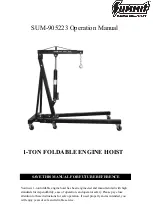
▪ Press the switch bracket.
See ….. Switch bracket (EasyStop) [➙ 22]
▪ Insert the billet into the static log carriage.
– The log slides to the log stop under gravity.
▪ Release the switch bracket and sawing starts.
▪ When the whole billet has been cut, stop the log carriage again and refill it.
Note:
Very sharp billets should be inserted with the blunt end first.
Depending on the quality of the wood, only one piece should be inserted at a time, otherwise
this can result in incorrect lengths.
Wood with a diameter or log length of up to 15 cm is the most suitable.
Notes on sawing
In order to improve the automatic log feed caused by gravity when using soft wood with low
log billet weight and/or for general reduction of friction on the sliding surface, so as to obtain
an optimal work flow, we recommend using commercially-available lubricants for wood
processing as necessary.
For example, Waxilit spray, Teflon spray, etc. can be used (including for the saw blade).
Sliding surfaces that are very dirty or covered in resin must always be cleaned.
Faulty operation when sawing
Prior to rectifying a possible fault, it is vital that the drive is switched off and secured to
ensure that it cannot be switched on accidentally or started up by unauthorised persons.
In the event that the saw blade becomes clamped:
▪ immediately pull the log carriage out fully (starting position); this will result in the trapped
piece of wood being pulled from the saw blade.
▪ Remove the billet.
When the log carriage completes an empty stroke without wood, the following faults are
possible:
▪ A piece of wood has got trapped in the conveyor belt or the conveyor belt transfer area.
– Remove the trapped wood.
▪ Blocking of the chip box by off-cuts (see 2.) and as a result increased build-up of chips
in the machine.
– Remove the off-cuts from the chip box.
Operation
29
















































